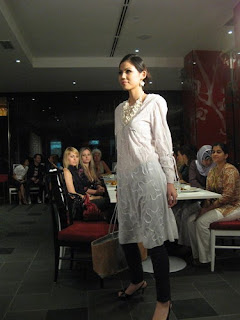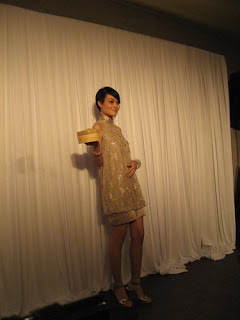Published on The Brunei Times (http://www.bt.com.bn/en)
Into the Kinabatangan jungle in search of Borneo pygmy elephants
Sunday, January 25, 2009
ON ONE of many visits to the national park, Taman Negara, in Peninsular Malaysia, I was really excited to see a solitary elephant in the wild. I was also quite scared to be so close to this huge pachyderm, as I was alone.
So you can imagine my delight when I went to the Kinabatangan River in Sabah, Borneo, and saw a whole herd of elephants. In fact we were able to get so close that we could see the wrinkles and hairs on their hide.
These were the Borneo pygmy elephants. Although elephants have been known in Sabah for some time, it was only in 2003 that it was reported they are possibly a subspecies of the Asian elephant.
There are different ideas about their origin on Borneo, and suggestion says that the elephants are a remnant population of a domesticated herd abandoned on the island by the Sultan of Sulu in the 17th century. Others say they were brought to Brunei by the British Borneo Company to help with the logging activities.
The elephants were known to be smaller than the normal elephants in Asia, but DNA analysis carried out in 2003 proved that the pygmy elephants were genetically distinct from other Asian elephants. They are likely to belong to a new subspecies.
The DNA evidence showed that these elephants were isolated about 300,000 years ago from their cousins on mainland Asia and Sumatra. During that period, they became smaller with relatively larger ears, longer tails and straighter tusks.
They are officially named as Borneo pygmy elephant, (Elephas maximus borneensis). Sadly they are already recognised as an endangered species, and although their population is not known, it is estimated to be less than 1,500. Most of these live in Sabah, in lowlands and valleys. They are endangered due to loss and fragmentation of habitat, poaching and culling for their ivory, and other body parts.
So I felt quite honoured to be able to see them at such close quarters. Not all tourists are so lucky. The elephants are migratory and need a huge area of natural habitat to live and breed. So the elephants are only in one place for a short time before moving on.
Quite often when tourists go to the banks of the Kinabatangan to look for the elephants, they are disappointed as these creatures are many miles away. The guide told us they are only seen about five to six times a year.
Normally they try to avoid humans, due to their shy nature. Due to the loss of their natural habitats, they have to pass near populated areas and plantations, and along the banks of the Kinabatangan.
The elephants have a gentle nature and don't seem to mind the presence of gawping tourists equipped with cameras. Although they are the same colour as the Asian elephants, the pygmies have longer tails and are very appealing with their babyish faces and rotund shape. Asian elephants are smaller than their African relatives.
Borneo pygmy elephants are forest herbivores. One adult can eat up to 150kg of vegetation per day, feeding mostly on species of palms, grasses and wild bananas.
They love durian and will roll the entire fruit including spikes in mud, then swallow it whole. They also appear to require supplementary minerals, which they obtain from salt licks.
Elephants live in a matriarchal society, led by a female in small groups of around eight individuals, although larger groups can be seen gathering in open feeding grounds, particularly on riverbanks.
Family groups consist of the females and immature males. Sometimes an adult male can be associated with a herd. When not in a herd, adult males usually remain solitary. They sometimes gather in small but temporary bull herds.
The group I saw consisted of about 15 animals and there were several babies with their mothers. There were four more further away, and yet another group in the woods in the distance.
Even though we made quite a noise scrambling up the river bank from the boat, the elephants stayed put and continued feeding although they did trumpet at our arrival.
The elephants need contact with other family groups to maintain genetic diversity for their evolution and survival. These animals live for up to 60 years in the wild and more than 80 years in captivity. One calf is born at a time and female Asian elephants have about seven calves in a lifetime.
This means they give birth about every four to six years if environmental conditions are favourable. The gestation period is between 19 to 22 months, almost two years, more than twice as long as human babies!
Soon after these pygmy elephants were declared to be a new species, some were captured by traders and were almost exported to zoos in China and Japan. Fortunately the authorities stepped in and banned the export of pygmy elephants.
These pachyderms will only survive as long as their habitat lasts. Large-scale agriculture is encroaching onto their territory as well as deforestation and development. Shrinking forests have also brought the elephants into more contact with people, increasing human-elephant conflict.
Let's hope that these animals, which are one of the last major discoveries in the animal world, will be able to survive and continue living successfully in Borneo.
The Brunei Times
So you can imagine my delight when I went to the Kinabatangan River in Sabah, Borneo, and saw a whole herd of elephants. In fact we were able to get so close that we could see the wrinkles and hairs on their hide.
These were the Borneo pygmy elephants. Although elephants have been known in Sabah for some time, it was only in 2003 that it was reported they are possibly a subspecies of the Asian elephant.
There are different ideas about their origin on Borneo, and suggestion says that the elephants are a remnant population of a domesticated herd abandoned on the island by the Sultan of Sulu in the 17th century. Others say they were brought to Brunei by the British Borneo Company to help with the logging activities.
The elephants were known to be smaller than the normal elephants in Asia, but DNA analysis carried out in 2003 proved that the pygmy elephants were genetically distinct from other Asian elephants. They are likely to belong to a new subspecies.
The DNA evidence showed that these elephants were isolated about 300,000 years ago from their cousins on mainland Asia and Sumatra. During that period, they became smaller with relatively larger ears, longer tails and straighter tusks.
They are officially named as Borneo pygmy elephant, (Elephas maximus borneensis). Sadly they are already recognised as an endangered species, and although their population is not known, it is estimated to be less than 1,500. Most of these live in Sabah, in lowlands and valleys. They are endangered due to loss and fragmentation of habitat, poaching and culling for their ivory, and other body parts.
So I felt quite honoured to be able to see them at such close quarters. Not all tourists are so lucky. The elephants are migratory and need a huge area of natural habitat to live and breed. So the elephants are only in one place for a short time before moving on.
Quite often when tourists go to the banks of the Kinabatangan to look for the elephants, they are disappointed as these creatures are many miles away. The guide told us they are only seen about five to six times a year.
Normally they try to avoid humans, due to their shy nature. Due to the loss of their natural habitats, they have to pass near populated areas and plantations, and along the banks of the Kinabatangan.
The elephants have a gentle nature and don't seem to mind the presence of gawping tourists equipped with cameras. Although they are the same colour as the Asian elephants, the pygmies have longer tails and are very appealing with their babyish faces and rotund shape. Asian elephants are smaller than their African relatives.
Borneo pygmy elephants are forest herbivores. One adult can eat up to 150kg of vegetation per day, feeding mostly on species of palms, grasses and wild bananas.
They love durian and will roll the entire fruit including spikes in mud, then swallow it whole. They also appear to require supplementary minerals, which they obtain from salt licks.
Elephants live in a matriarchal society, led by a female in small groups of around eight individuals, although larger groups can be seen gathering in open feeding grounds, particularly on riverbanks.
Family groups consist of the females and immature males. Sometimes an adult male can be associated with a herd. When not in a herd, adult males usually remain solitary. They sometimes gather in small but temporary bull herds.
The group I saw consisted of about 15 animals and there were several babies with their mothers. There were four more further away, and yet another group in the woods in the distance.
Even though we made quite a noise scrambling up the river bank from the boat, the elephants stayed put and continued feeding although they did trumpet at our arrival.
The elephants need contact with other family groups to maintain genetic diversity for their evolution and survival. These animals live for up to 60 years in the wild and more than 80 years in captivity. One calf is born at a time and female Asian elephants have about seven calves in a lifetime.
This means they give birth about every four to six years if environmental conditions are favourable. The gestation period is between 19 to 22 months, almost two years, more than twice as long as human babies!
Soon after these pygmy elephants were declared to be a new species, some were captured by traders and were almost exported to zoos in China and Japan. Fortunately the authorities stepped in and banned the export of pygmy elephants.
These pachyderms will only survive as long as their habitat lasts. Large-scale agriculture is encroaching onto their territory as well as deforestation and development. Shrinking forests have also brought the elephants into more contact with people, increasing human-elephant conflict.
Let's hope that these animals, which are one of the last major discoveries in the animal world, will be able to survive and continue living successfully in Borneo.
The Brunei Times























































